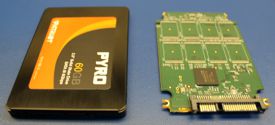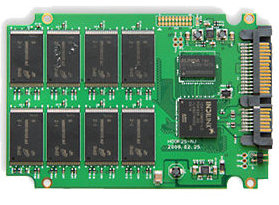
A typical SSD (Solid State Dive) is essentially ganged NAND memory IC’s on a larger PCB. The same data recovery techniques used for smaller USB flash drives were originally used for ssd data recovery; however, this technology is very dynamic and currently all manufacturers are using encryption with their controllers.
Old Method: Previously if an SSD type drive printed circuit board could not be repaired, each individual NAND memory IC would be removed and read individually to obtain raw data dumps. At this point, reverse engineering was performed to manipulate the data as the original controller did. It was critical that all the memory dumps were ordered specifically based on how they were arranged on the SSD printed circuit board.
Current Method: Using specialized tools and an advanced knowledge of the controller and NAND memory chips, the device can often be placed in a “safe mode” state and the devices firmware can be manipulated to allow access to the damaged controller or failing NAND chips. Often times the devices original translator can be repaired or emulated allowing access to the users data.
SSD data recovery pricing is dependent on the total capacity of the SSD and the type of the controller used. Many controllers used in present day flash drives employ encryption on the device. This adds an additional problem to the current data recovery task when dealing with encrypted data.
Typical SSD (Solid State Drive) with cover removed

SSD (Solid State Drive) NAND memory IC’s removed

Apple Mac SSD’s
Below are typical examples of Apple Mac SSD’s which are often proprietary devices manufactured specifically for Mac’s.
Some common controllers pictured are Samsung and Toshiba.
